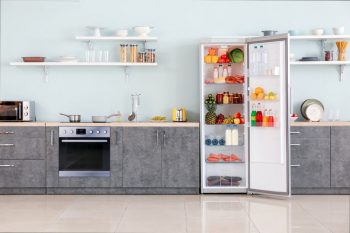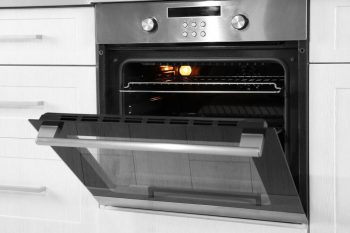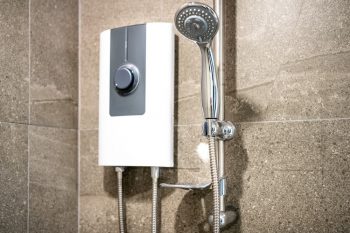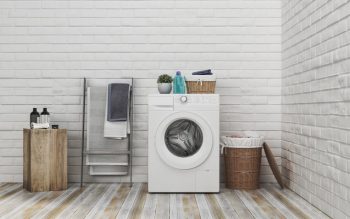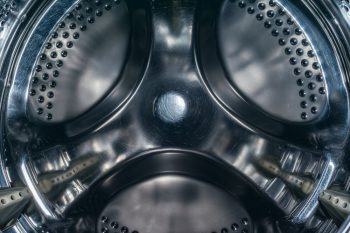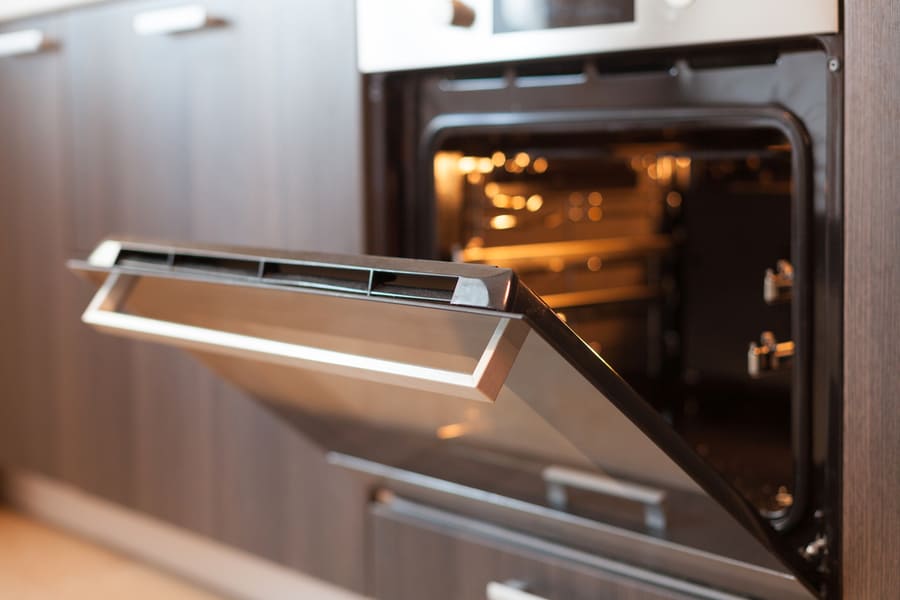
Most people enjoy baking, grilling, and roasting in their ovens. However, many dread cleaning their ovens. With the invention of self-cleaning ovens, you should be able to enjoy preparing your meals in your oven without dreading cleaning them.
A self-cleaning oven, also called a pyrolytic oven, is an electricity or gas-powered oven that uses high temperatures to burn off leftovers from cooking in the oven without using any chemical agents.
However, the self-cleaning option is not meant to replace manual cleaning. While some folks love how convenient and time-saving pyrolytic ovens are, others dislike the function due to the emission of fumes and the high power consumption when using the mode.
It is, therefore, vital to understand how self-cleaning ovens work and the pros and cons of this mode before deciding whether to use it.
- A self-cleaning oven works by incinerating residue food particles, grease, and grime inside the oven.
- The maximum number of times you should run a self-cleaning cycle is twice a year because frequent use of the function can damage parts of the oven.
- When running a self-cleaning cycle, ensure adequate ventilation and remove your pets from the area.
- While self-cleaning ovens save time and energy, they have drawbacks such as off-gassing, taking too long to clean an oven, causing increased energy bills, and causing potential damage to parts of the oven.
This article is a guide on how self-cleaning ovens work. We’ll also discuss the cons of using the self-cleaning mode and answer a few questions on self-cleaning ovens in the article’s FAQ section.
How Self-Cleaning Ovens Work
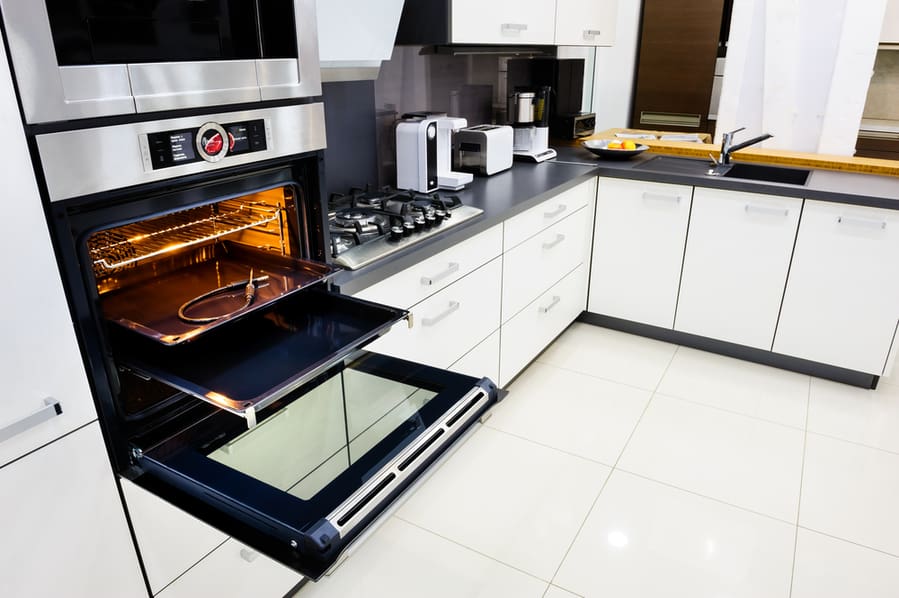
As the introduction highlights, a self-cleaning oven has a mode that uses extremely high heat (around 880 degrees F.) to incinerate oils and food residue.
The high temperatures help burn grease, grime, and food residues inside the oven and reduce them to ash, which you must remove with a dump rag when the cycle is complete. You can find the self-cleaning mode on your oven’s control panel or the labeled knobs.
The self-cleaning cycle runs for approximately two to six hours, depending on the oven brand and the amount of dirt it has.
When the cycle runs, the oven door automatically locks, and the oven’s exterior becomes extremely hot. The oven door remains closed through the cycle and unlocks once the session is complete.
It would be best if you did not attempt to stop the self-cleaning cycle after it has started. At most, you should use the self-cleaning mode once in six months, depending on the frequency you use your oven.
It is also vital to note that you should not use any cleaning products when running a self-cleaning cycle. Unfortunately, many homeowners are skeptical about using this mode because of its drawbacks (which we’ll discuss later in this article).
Therefore many oven manufacturers are replacing the self-cleaning mode in their newer oven models with a steam-cleaning function. The steam-cleaning mode uses heat but only requires heat at about 250 degrees Fahrenheit.
You must also add water to the oven’s floor to create steam that helps release the residue from the oven’s surface. Compared to the self-cleaning mode, a steam-cleaning cycle only takes about an hour to clean the oven.
How To Use Self-Clean Mode in an Oven
Now that you know how self-cleaning ovens work, let’s dive into how to run a self-cleaning cycle.
However, reading your manufacturer’s manual is vital to ascertain what it says about your specific oven model. Nonetheless, the basics of running a self-cleaning cycle are the same for most oven models.
1. Prepare for the Self-Cleaning Cycle

Preparation is key when running a self-cleaning cycle. Some of the activities you should take to prepare for self-cleaning include the following:
- Cook everything you need to cook before starting the self-cleaning cycle. The cycle takes about two to six hours, and you should not attempt to stop it mid-cycle.
- Uncover the oven vent located above or below the oven, and where applicable, turn on the range hood exhaust fan to ensure that the fumes get expelled outdoors.
- Open all the windows in the kitchen to boost ventilation.
- If you have a pet bird, move it away from the kitchen because some bird species are allergic to the fumes produced during a self-cleaning cycle.
- Remove large food particles from the oven before running a self-cleaning cycle.
- Read your user manual to find out how to clean the oven racks or whether to leave them in the oven during the self-cleaning cycle.
2. Clear the Oven

After making the necessary preparations, remove any oven liners, utensils, or bakeware from the oven. Also, if your user manual advises removing the oven racks, ensure you do it.
In addition, remove any oven mitts and hand towels that may be hanging on the oven because the oven gets very hot when running the self-cleaning.
It is also vital that you remove anything that’s on top of the oven or stovetop since the oven may exhaust through a vent on top of the oven or stovetop.
3. Ensure Adequate Ventilation

If you have not done it during the preparation step, ensure adequate ventilation in your kitchen before starting a self-cleaning cycle.
This includes opening all windows, turning on overhead fans, and range hood exhaust fan where applicable. As we’ve mentioned before, the self-cleaning cycle emits a profuse amount of fumes which can be dangerous to those within the house.
4. Lock the Oven Door and Select the Self-Clean Cycle

Once ready, lock the oven door and select the self-clean cycle from the control panel. If using knobs, turn on the allocated knob for the self-clean mode.
In most models, the oven door will automatically shut once you select the self-clean mode.
When you can decide the time of the self-clean cycle, consider setting it to the shortest possible duration to reduce energy consumption and avoid the risk of overheating, which can lead to mechanical issues.
However, put a longer cleaning duration if your oven is too dirty. It would be best if you didn’t leave home when a self-clean cycle is running to keep a watchful eye.
5. Let the Oven Cool Down
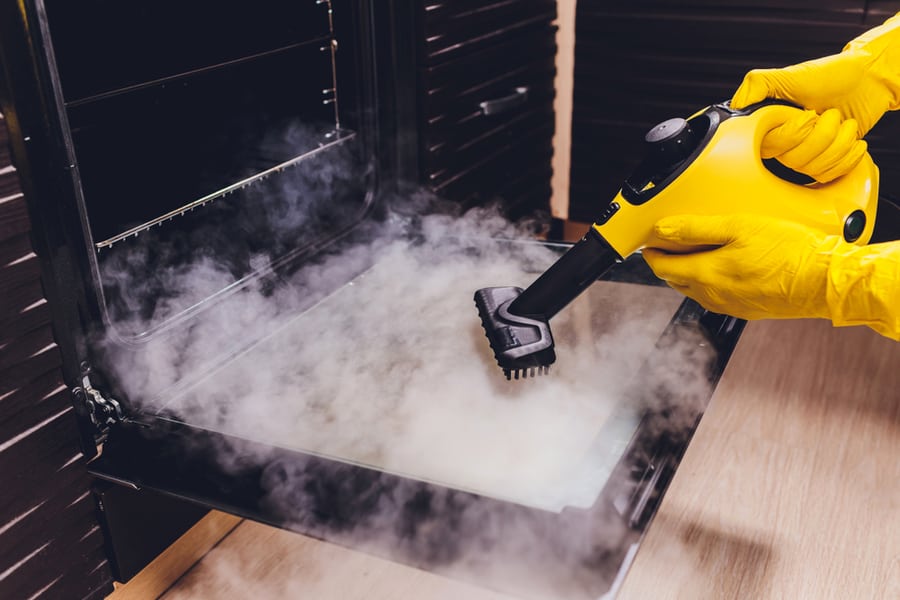
Depending on the model, your oven door may remain shut until the oven has cooled down fully when the door opens.
If your oven doesn’t have this setting, ensure that you give it adequate time to cool down before opening its door.
6. Clean Out the Residue
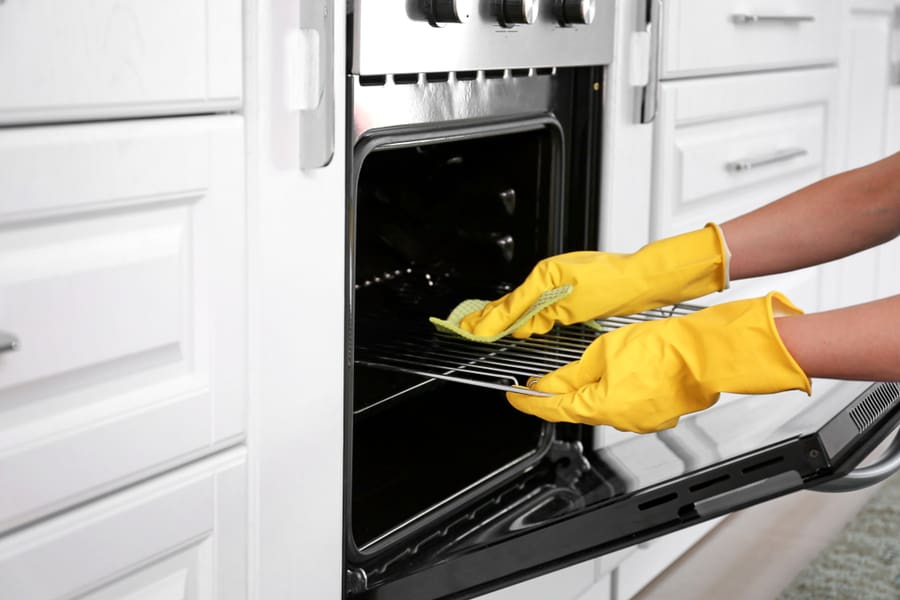
As mentioned earlier in this article, the self-cleaning cycle reduces all the dirt, grease, and grime in the oven to ash, which collects on your oven’s sides and floor.
After the oven has cooled down, open its door and grab a clean microfiber cloth, dampen it with clean water, and use it to wipe the ashy residue.
7. Reassemble the Oven

If you have removed the oven racks, clean them with hot soapy water, rinse them, and allow them to dry before returning them to the oven.
8. Clean the Oven Exterior
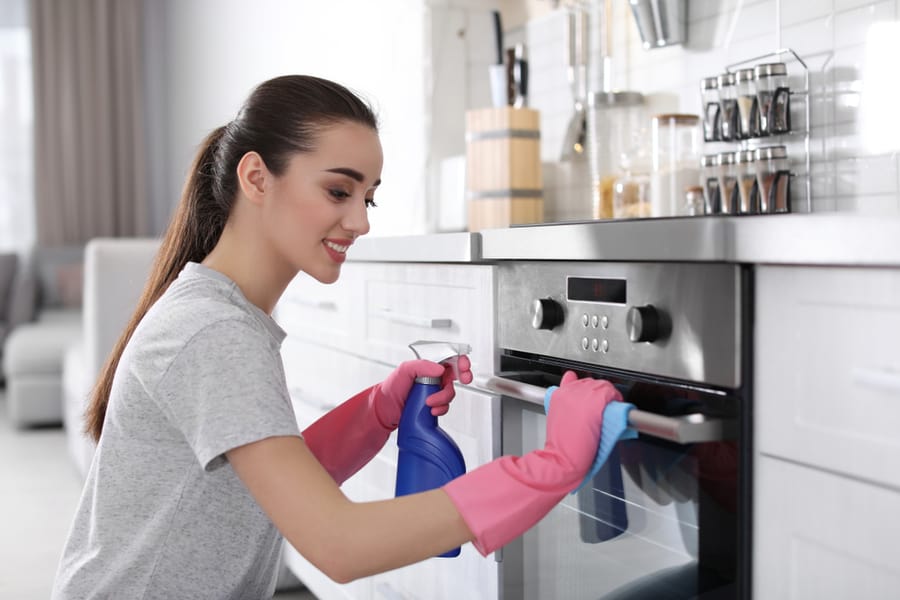
With the interior of your oven clean, it’s time to clean the exterior. A microfiber cloth dipped in hot soapy water will suffice in most cases.
Give the entire exterior surface a good wipe and leave it to dry. With that, your oven is clean and ready to prepare sumptuous meals.
9. Keep the Oven Clean

Since running a self-cleaning cycle now and then is unsafe and uneconomical, you must incorporate ways to keep your oven clean and safe for use.
Consider doing the following:
- After using the oven wipe any spills and splatters from the sidewalls, ceiling, inner door glass, and floor with a microfiber cloth dipped in hot soapy water.
- Maintain a regular cleaning schedule where you clean the oven’s interior and exterior like a traditional oven. It is best if you use safe cleaning products such as a combination of vinegar and baking soda.
Cons of Using the Self-Cleaning Mode
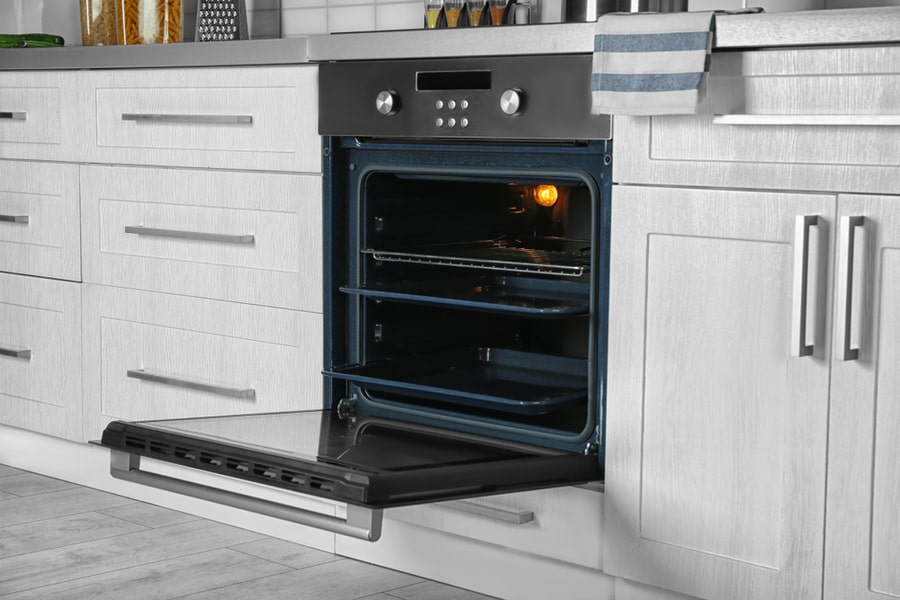
While the self-cleaning feature can save you time and energy, it also has drawbacks.
They include the following:
1. Gas release: A lot of Carbon Monoxide is released during a self-cleaning cycle. If there is inadequate ventilation in the home, this can be risky to any occupants in the house. The fumes that the process produces are also poisonous to some bird species.
2. Damaging Oven Parts: When the oven temperature gets too high, it can damage components such as the high-limit switch, the door lock, the relay board, the knobs, or even the oven light bulbs. This can lead to high costs of repairing or replacing these parts.
3. Spikes Your Energy Bills: A self-clean cycle requires a temperature of about 800°F. Sustaining such high temperatures for over five hours consumes a lot of gas or electricity, leading to increased energy bills.
4. It Takes Too Much Time To Clean an Oven: A self-clean cycle takes approximately two to six hours. This is a lot of time compared to a steam-clean or a manual cleaning which takes two hours or less.
Conclusion
Self-cleaning ovens are a revolutionary invention you can not afford to ignore. With adequate preparation and patience, you can clean your oven with minimal effort, unlike traditional ovens requiring scrubbing and expensive cleaning products.
However, it is vital to understand the tradeoffs you’ll make if you use the self-cleaning function, including possible damage to parts of your oven.
Frequently Asked Questions
How Long Does a Self-Clean Cycle Take?
A self-clean cycle takes two to six hours, depending on the dirt in your oven and your oven’s model.
Can I Disrupt a Self-Cleaning Cycle?
No. You should not disrupt a self-cleaning cycle, and even if you try, you may fail because, in most oven models, the oven door remains closed until the cycle is complete.
How Often Should I Use the Self-Cleaning Mode in My Oven?
Using self-cleaning mode frequently can damage parts of your oven, so it is best to use it at most twice a year.



